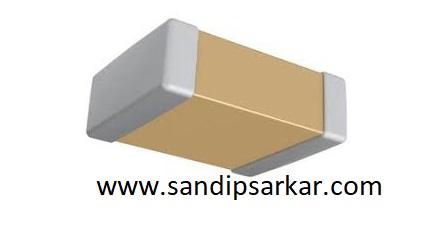A capacitor is a passive electronic component that is used to store and release electrical energy. It consists of two conductive plates separated by a dielectric material. When a voltage is applied across the plates, the capacitor stores energy in the form of an electric field between the plates.
The amount of energy that can be stored by a capacitor depends on its capacitance, which is a measure of its ability to store charge. Capacitance is determined by the size of the plates, the distance between them, and the dielectric material used.
Capacitors are commonly used in electronic circuits for a variety of purposes, including filtering out noise, smoothing power supplies, and coupling signals between stages of amplifiers. They can also be used in timing circuits and as energy storage devices in power electronics applications.
The unit of capacitance is the Farad (F), named after the English physicist Michael Faraday, who discovered the principles of capacitance in the early 19th century. However, in practice, capacitors are usually measured in microfarads (μF), nanofarads (nF), or picofarads (pF), as capacitance values in Farads are typically too large for most applications.
Type of capacitor
There are many different types of capacitors, each with its own characteristics and applications. Here are some of the most common types:
Ceramic Capacitors
These are small and inexpensive capacitors that are commonly used in high-frequency applications. They have a low tolerance and are typically available in capacitance values ranging from a few picofarads to a few microfarads.
Electrolytic Capacitors
These capacitors are polarized and have a higher capacitance compared to ceramic capacitors. They are commonly used in power supplies and audio circuits. They are available in both through-hole and surface-mount packages.
Tantalum Capacitors:
These capacitors are similar to electrolytic capacitors but have a higher tolerance and are more stable. They are commonly used in audio and power circuits.
Film Capacitors:
These capacitors are made of a thin plastic film with a conductive coating on either side. They have a low tolerance and are commonly used in audio circuits.
Super capacitors:
These are high-capacity capacitors that can store a large amount of energy. They are commonly used in hybrid and electric vehicles, as well as in backup power systems.
Variable Capacitors:
These capacitors have a variable capacitance that can be adjusted using a mechanical or electrical mechanism. They are commonly used in tuning circuits, such as in radios.
Mica Capacitors:
These capacitors are known for their stability and accuracy. They are commonly used in high-frequency circuits, such as in radio frequency (RF) applications.
These are just some of the most common types of capacitors, and there are many other specialized types used for specific applications, such as motor-run capacitors, safety capacitors, and high-voltage capacitors.
SMD Capacitor
Anyway, the capacitor that we need most nowadays is smd capacitor, this smd capacitor is used in all digital devices nowadays, also any android tv all devices use this smd capacitor.

SMD (Surface Mount Device) capacitors are a type of capacitor that is designed to be mounted directly onto the surface of a printed circuit board (PCB). They are typically small in size and have a low profile, making them ideal for use in compact electronic devices.
SMD capacitors come in a range of different package sizes and shapes, including rectangular, circular, and chip form. They are often marked with a three or four-digit code that indicates the capacitance value and tolerance.
Some of the advantages of SMD capacitors include their small size, high reliability, and low cost. They are also easy to install using automated pick-and-place machines, which makes them popular for mass-produced electronics.
However, SMD capacitors can be difficult to repair or replace as they are mounted directly onto the PCB and require specialized equipment to remove and replace. They also have a lower voltage rating compared to larger through-hole capacitors, which may limit their use in high-voltage applications.
Despite these limitations, SMD capacitors are widely used in modern electronics due to their small size, low cost, and high reliability.
These SMD capacitors are currently being used in digital devices such as mobile televisions computers etc.
How to check capacitor
There are several ways to check a capacitor to determine whether it is working properly or not. Here are some methods:
Visual Inspection:
Check the capacitor for signs of physical damage, such as bulging or leaking. If the capacitor appears damaged, it should be replaced.
Multimeter Test:
A multimeter can be used to test the capacitance of a capacitor. Set the multimeter to the capacitance setting and touch the probes to the capacitor terminals. The multimeter should display a capacitance value within the specified tolerance range. If the reading is outside the tolerance range, the capacitor may be faulty.
Voltage Test:
Another way to test a capacitor is to measure its voltage. Disconnect the capacitor from the circuit and discharge it using a resistor or a shorting wire. Connect a voltmeter to the capacitor terminals and apply voltage to the capacitor. The voltage should rise and then slowly decrease. If the voltage does not rise or remains constant, the capacitor may be faulty.
ESR (Equivalent Series Resistance) Test:
An ESR meter can be used to test the internal resistance of a capacitor. A high ESR reading may indicate a faulty capacitor.
Capacitance Meter Test:
A capacitance meter is a specialized device that measures the capacitance of a capacitor. It provides a more accurate measurement compared to a multimeter.
It’s important to note that testing capacitors can be dangerous, especially when dealing with high-voltage capacitors. Always follow safety guidelines and best practices when working with capacitors, and if in doubt, consult a professional.
